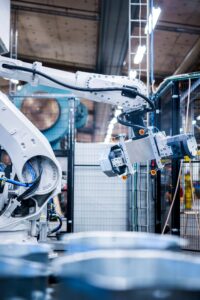The restaurant industry has one of the highest failure rates of any business sector, with approximately 60% of new restaurants closing within the first year and 80% within five years. Yet Riverview Bistro has not only survived for 12 years but has become a cornerstone of our downtown dining scene. I sat down with owner and chef Elena Santos to discuss how she’s navigated industry challenges, from the pandemic to delivery apps to rising food costs, and what community members might not understand about the realities of running a restaurant today.
From Corporate Kitchen to Independent Ownership
Jason: Elena, thanks for making time for this conversation. Let’s start at the beginning—what made you leave a secure executive chef position to open Riverview Bistro?
Elena: Thanks for having me, Jason. The decision came down to creative freedom. I was the executive chef at Harborview Hotel for seven years, and while it was a great position with benefits and stability, I was increasingly frustrated by corporate menu constraints and cost-cutting mandates.
I kept a journal of dishes I wanted to create but couldn’t—seasonal plates that celebrated local ingredients but wouldn’t fit the standardized hotel menu approach. Eventually, that journal became my business plan for Riverview.
The final push came when the hotel group was acquired, and the new ownership increased the number of frozen pre-made items they wanted us to use. I knew it was time to bet on myself or forever wonder “what if.”
Jason: Riverview Bistro opened in 2013, well before the pandemic. What was the original vision, and how has it evolved?
Elena: The original concept was “elevated local comfort food”—taking familiar dishes but preparing them with fine dining techniques and local ingredients. We wanted to be approachable enough for a Tuesday night dinner but special enough for anniversaries.
What’s changed most significantly is our business model. We started as a traditional dinner-only restaurant. Now we have multiple revenue streams—a robust takeout program, retail items like our house-made sauces and spice blends, cooking classes, and private events. That diversification saved us during the pandemic and continues to be crucial.
The core culinary philosophy remains the same, though—we’re still focused on local ingredients prepared with care. That’s non-negotiable.
Navigating the Pandemic and Beyond
Jason: The pandemic devastated the restaurant industry. Can you share what that experience was like from the inside?
Elena: [deep breath] Those first few weeks were the most terrifying of my professional life. We lost 85% of our revenue overnight. I had 22 employees who depended on their jobs, fixed expenses that didn’t stop, and a completely uncertain future.
We pivoted to takeout within 48 hours—I was literally in the parking lot with a folding table handling curbside pickup while we figured out a better system. We created “family meal kits” that fed 4-6 people at a lower price point than our regular menu because we knew families were struggling too.
The hardest part was laying off staff, even temporarily. I made personal calls to each employee, and those conversations still haunt me. We were eventually able to bring back about 70% of our team, but some positions were permanently eliminated.
Jason: Beyond the immediate crisis, how has the pandemic permanently changed your business?
Elena: It accelerated changes that were already happening and forced us to make decisions we might have postponed otherwise. Our digital presence became essential rather than supplemental. We invested in our own online ordering system rather than relying exclusively on third-party apps that take substantial commissions.
Our physical space changed too. We reduced indoor seating by 20% to create more space between tables, which customers still appreciate. We winterized our patio with heaters and wind barriers to extend outdoor dining season by several months.
The most significant permanent change is probably our staffing model. We now operate with a smaller, more cross-trained team that’s paid better than industry standard. Everyone from dishwashers to servers now makes at least $20/hour plus benefits, which was unheard of in independent restaurants before. We can do this because we raised prices, simplified some processes, and run with a leaner team.
The Economics of Running a Restaurant Today
Jason: There’s often a disconnect between customer expectations and business realities. What do you wish diners understood about restaurant economics?
Elena: [laughs] Where to start? The biggest misconception is probably about our profit margins. The average restaurant operates on a 3-5% profit margin in normal times. That means on a $100 check, we might make $3-5 in actual profit.
Food costs have increased dramatically—some ingredients are up 40% since 2019. Our payroll costs have increased too, which is necessary and right for our team, but it impacts the bottom line. Overhead like rent, insurance, and utilities keeps climbing.
When we raised prices by about 15% over the past two years, we got some complaints from regular customers. What they didn’t see is that our costs went up by more than 20%, so we actually absorbed some of that increase ourselves.
I also wish people understood the true cost of delivery apps. When you order through them, they take 15-30% of the revenue. If we’re only making 5% profit to begin with, we’re actually losing money on most of those orders. That’s why we now offer incentives for customers to order directly through our website.
Jason: How have staffing challenges affected your business?
Elena: The “labor shortage” narrative doesn’t tell the whole story. What we’ve experienced is more of a reckoning with how the restaurant industry has traditionally treated workers. The pandemic gave people time to reassess, and many decided that irregular schedules, no benefits, and low wages weren’t acceptable anymore.
We’ve had to completely rethink our approach to staffing. We now offer predictable schedules posted three weeks in advance, health insurance for full-time employees, paid sick leave, and higher base wages. We close two days a week to ensure everyone gets time off. We’ve also invested in technology and workflow improvements to reduce the physical toll on our staff.
These changes have increased our labor costs by about 25%, but our turnover has dropped dramatically. I haven’t had a line cook quit in 18 months, which is practically unheard of in this industry. The stability and experience level of our team translates to better food and service, which customers do notice.
Community Support and Business Philosophy
Jason: How has the community supported you through these challenges?
Elena: In ways that still make me emotional when I think about them. During the worst of the pandemic, we had customers buying gift cards they didn’t intend to use, just to provide cash flow. One regular anonymously paid for staff meals for a week when we were temporarily closed.
Our local farmers and suppliers worked with us on payment terms when things were tight. The downtown business association helped us navigate permit requirements for expanded outdoor seating.
The most meaningful support, though, has been the patience and understanding from customers as we’ve adapted. When we reduced menu options to streamline kitchen operations, people understood. When we had to increase prices, most customers recognized it was necessary.
Jason: What business philosophy has guided you through these challenges?
Elena: I believe that a restaurant should nourish everyone it touches—customers, employees, suppliers, and the community. Every decision we make is filtered through that lens.
We’ve turned down opportunities that might have been profitable but didn’t align with our values. For example, we were approached about opening a second location in a new development across town. The numbers looked good, but it would have stretched our team too thin and compromised our quality and work environment.
I’ve learned that sustainable success comes from building relationships, not just transactions. We know our regular customers by name. We know our suppliers personally. We celebrate our staff’s birthdays and achievements outside of work. That relationship-centered approach creates a resilience that helps weather challenges like the ones we’ve faced.
Looking Ahead
Jason: What concerns you most about the future of independent restaurants?
Elena: Consolidation and homogenization. We’re seeing restaurant groups and chains with deeper pockets buy up prime locations as independents close. Each time a unique local restaurant is replaced by a chain or concept from a restaurant group, we lose something special about our local food culture.
I’m also concerned about the disconnect between consumer pricing expectations and the true cost of ethically produced food. If customers aren’t willing to pay what it actually costs to serve high-quality food made by fairly compensated staff, we’ll see more corners cut throughout the industry.
Jason: On a more positive note, what excites you about the future?
Elena: I’m encouraged by growing consumer interest in where food comes from and how it’s produced. More customers are asking questions about our sourcing and are willing to pay a premium for sustainably raised ingredients.
Technology is also creating efficiencies that help small operators like us. Our inventory management system has reduced food waste by 22%, which is good for both our bottom line and the environment.
And I’m incredibly optimistic about the new generation coming into the industry. They’re questioning old norms, bringing fresh perspectives, and demanding better working conditions. That pressure is pushing positive change throughout restaurants.
Jason: Final question—what keeps you going on the toughest days?
Elena: The moments of connection across the table. When I see families celebrating milestones, first dates that turn into engagements years later, old friends reconnecting—that’s what this is all about. Food brings people together in a way nothing else can.
Every night before I leave, I walk through the dining room and listen to the conversation and laughter. That sound—people connecting over meals we’ve prepared—that makes all the challenges worthwhile.





